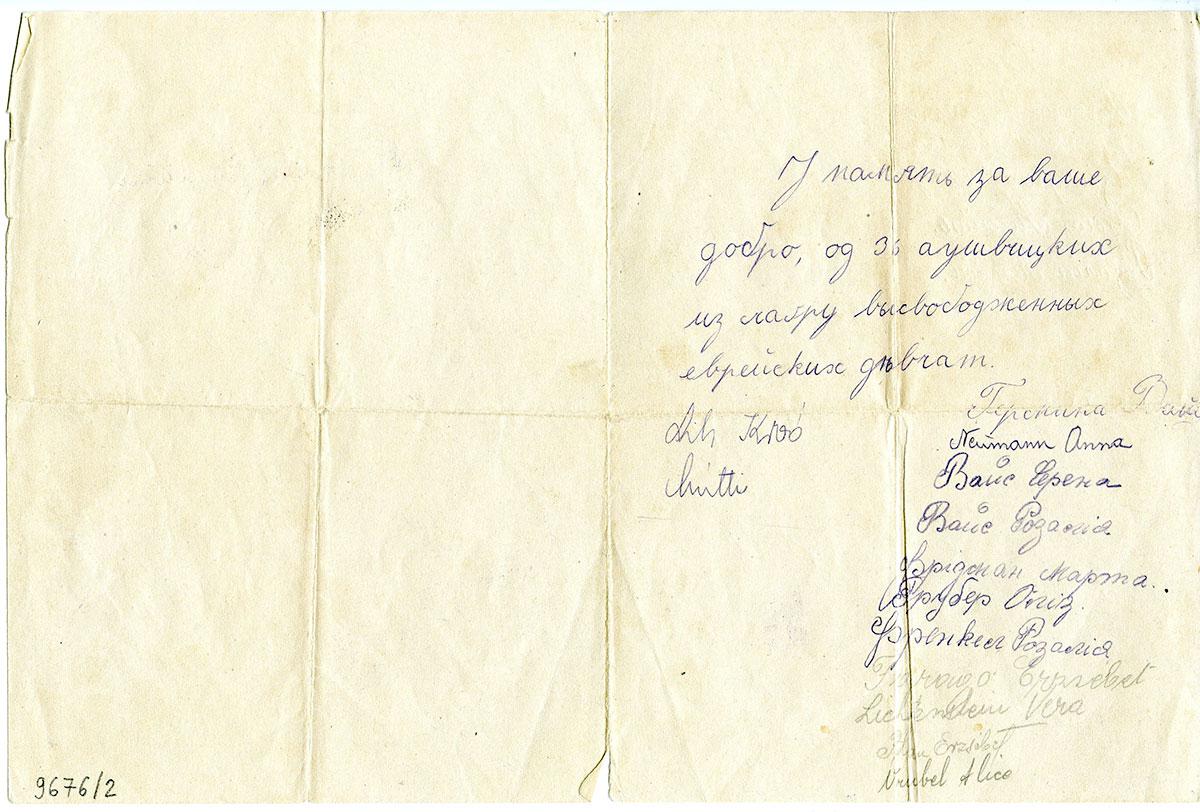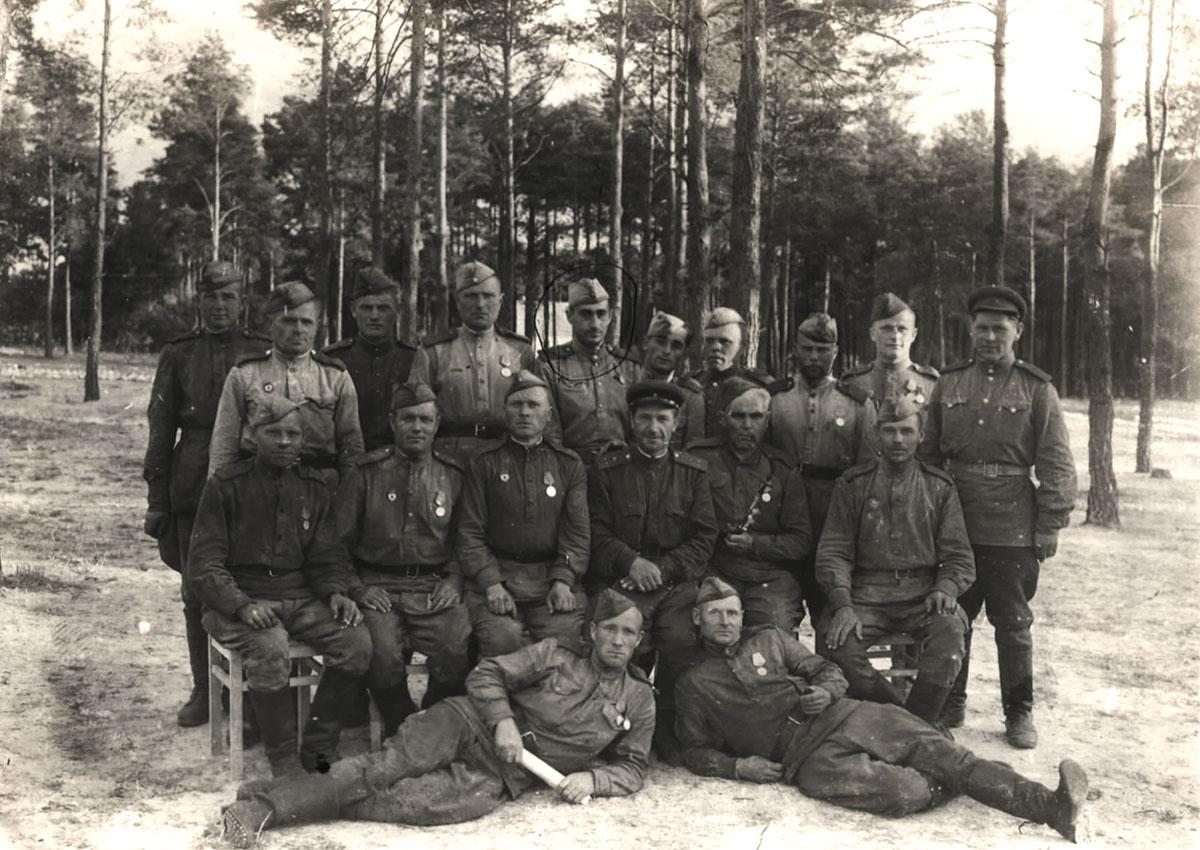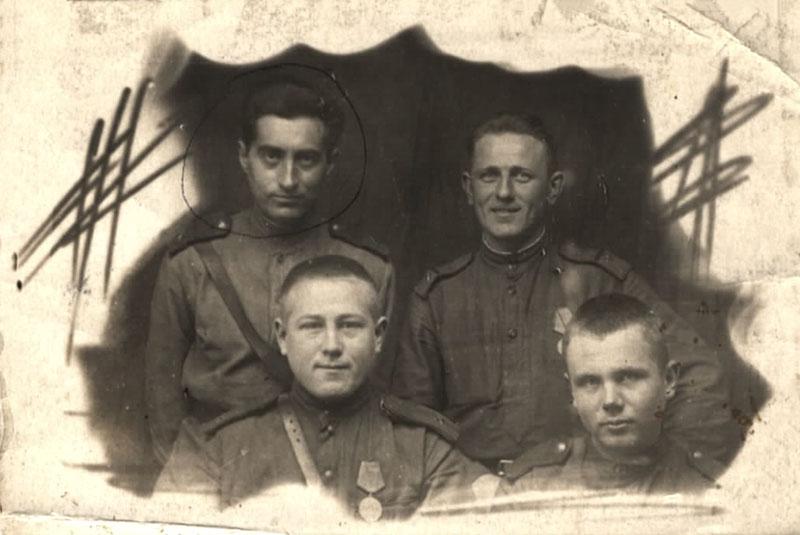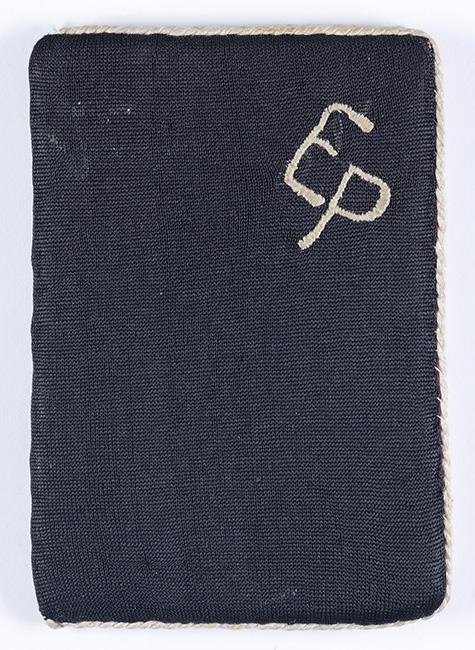






Yad Vashem Artifacts Collection
Donated by Vladilyna Rubashevsky, Kiryat Ono

Yad Vashem
"In memory of the good deeds you performed for us. Signed, 36 young women liberated from Auschwitz."
This moving letter of gratitude was tucked inside a handmade wallet created for Yehuda Rubashevsky, a soldier in the Red Army who was among the liberators of Auschwitz. Today the wallet and letter are housed in Yad Vashem’s Artifacts Department, one of thousands of items that serve as testimony to the liberation of the Jews, as well as the destruction of Jewish life during the Holocaust.
Rubashevsky, from the city of Kharkov in Ukraine, was drafted into the Red Army in 1941 following the outbreak of the war between Germany and Soviet Union. The young Jewish soldier served as a wireless operator in the Second Division of the Artillery Corps. In January 1945, his unit arrived at the gates of Auschwitz and participated in the liberation of the camp. Since he was the only soldier who spoke Yiddish, he volunteered to take care of a group of young Jewish women who had survived the camp. In order to show their deep appreciation for his kindness, the women sewed him a wallet, which was embroidered with his initials. They gifted him the wallet before they left the camp and were transferred to rehabilitation. Inside the wallet was the letter signed by 36 of the women.
Over the years, Rubashevsky often wondered what had happened to the women he helped. He longed to know their identities and where they ended up after the war. A few weeks before his death in Kharkov in 1973, he asked his daughter, Vladelena Rubashevski, to try to find out their fates. "My father never spoke to me about the war at all," recalls Rubashevski. "Before his death, he asked me to bring him a wallet that he kept in his drawer. He told me there was a letter written inside the wallet and asked me to read it out loud. I barely understood what the letter said, since a part of it was written in Polish. He explained to me that he was the only Jewish soldier in his unit that helped liberate Auschwitz."
Vladelena Rubashevski later immigrated to Israel, and while attending ulpan to learn Hebrew, her class took a field trip to Yad Vashem. She explained to her teacher about the wallet and letter, and she suggested donating them to Yad Vashem in order that they should be properly preserved.
Staff at the Artifacts Department of Yad Vashem's Museums Division were delighted with this rare find, and set about, as always, trying to find out as much as they could about the background story. The arduous mission to try to locate the signatories on the letter was given to Evgeny Rozin, who has been working at Yad Vashem since 2013 and has led more than 800 research investigations on various artifacts in the collection.
Finding these women was a challenging task, to say the least. Some of the names were extremely common at the time, and he also did not have any additional information about them, such as their date or place of birth, which made locating them almost impossible. In addition, most documentation from Auschwitz was destroyed by the retreating Germans.
Therefore, Rozin created several criteria in order to narrow down his search: the style in which they wrote the letter, an estimation of the age range of the women (based on details given by Rubashevsky), prisoners released from Auschwitz on 27 January 1945, and more.
From the results of his search, Rozin was able to determine that one of the women who signed the letter was a woman named Olga Klein.
Although Klein had passed away in 1984, Rozin was able to locate her three sons, who confirmed that she was indeed the Olga Klein he was searching for. According to Zvi Kreisman, his mother was the only person in her family to survive the Holocaust. Olga had never spoken about her experiences during that time, and he had certainly never heard of Yehuda Rubashevsky.
In fact, the first time Kreisman heard the full story about the Russian Jewish soldier who helped liberate his mother was when he visited Yad Vashem with his son, Dvir. In December 2015, in the lead-up to the 70th anniversary of the liberation of Auschwitz, Rozin’s research took on an even greater meaning when he arranged a meeting between Zvi Kreisman and Vladelena Rubashevski at Yad Vashem.
“On the one hand, the meeting at Yad Vashem with Vladelena and her granddaughter helped me understand fully what had happened to my mother in Auschwitz,” says Kreisman. "On the other, it opened up a flood of questions about the terrible ordeals of a 16-year-old girl in Auschwitz. Either way, it is vital that the letter and wallet are kept at Yad Vashem, a place that deals with gathering material on what happened to Jews during the Holocaust as a whole, and at Auschwitz in particular.”
“The meeting was very emotional and really touched my heart," said Vladelena Rubashevski. "It’s very important that my father's memory and bravery live on.”
Rozin explained why it was so significant for him personally to connect Yehuda Rubashevky’s and Olga Klein’s descendants. “In every artifact in our unparalleled collection, I see a historical connection between the past and the present. Each artifact tells a story, which serves as testimony of the Holocaust. We had received photographs and information concerning Yehuda Rubashevsky, but we did not have any personal stories about the women he helped liberate. It was a momentous achievement for us to be able to tell at least one of their stories.
"I see my job as my life’s mission," Rozin continues. "I am filled with pride that my research makes a small yet important contribution to Jewish society and the history of Israel.” Rozin still yearns to discover the fate of the remaining 35 women. The search continues.










